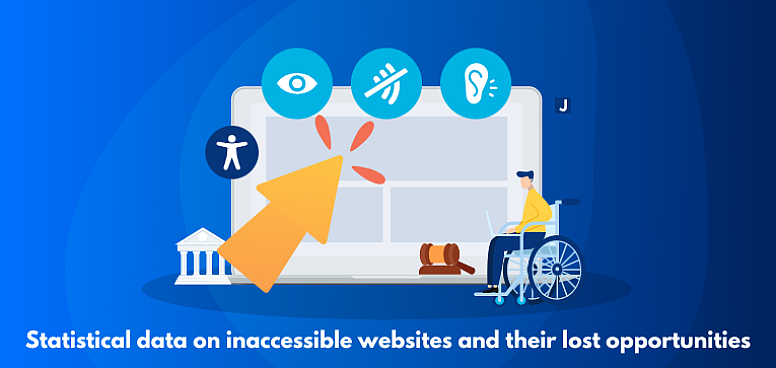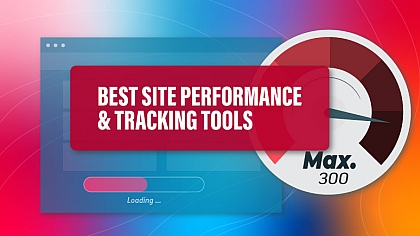
Statistical Data on Inaccessible Websites & Lost Opportunies
In the era where the internet serves as a primary gateway to information, the importance of website accessibility cannot be overstated. While we wonder at the possibilities that the online world offers, there exists a harsh reality that needs attention - a large portion of websites remain inaccessible to the global population.
Nearly, 1.3 billion people suffer from a disability, representing 16% of the global population. Statistics reveal that approx. 96.3% of home pages had detectable WCAG 2 failures. This means that nearly all websites have some level of inaccessibility that can make it difficult or impossible for people with disabilities to use them.
However, the impact is not only limited to the individuals but also has economic influences. To put it in financial terms, companies with inaccessible sites may face a massive loss in revenue due to missed opportunities for not recognizing the value of site accessibility.
Similarly, some various consequences and stats illustrate why website accessibility is a vital consideration for the sustained growth of online businesses. Let’s have a look at them.
Possible consequences of inaccessible websites
If a website fails to comply with accessibility guidelines, it will be vulnerable to lawsuits and the chances of losing thousands of customers will increase. Such legal challenges not only affect the company’s reputation but also lead to financial losses.
Damage to brand and reputation
An inaccessible site sends a negative message to the audience indicating that the business is not committed to creating a welcoming environment for all segments of people. When users, including differently-abled individuals, encounter obstacles while navigating a site, negative perceptions are created that result in a damaged brand reputation.
A significant portion of people with disabilities may abandon a site that is difficult to use, resulting in a huge annual loss to the company. This depicts the real-world impact of inaccessible websites on business revenue. It emphasizes the undeniable importance of web accessibility to avoid economic losses.
Legal and compliance risks
Regions like the United States have established legal regulations (such as the Americans with Disabilities Act (ADA) and Section 508) to ensure web accessibility, wherein non-compliance can result in legal actions, fines, and penalties. Also, undergoing such lawsuits worsens the public image of the company. While these legal requirements may vary from one jurisdiction to another, the fundamental goal is to ensure that websites are accessible to all individuals, including those with disabilities.
As per the 2023 MidYear UsableNet Digital Accessibility report, eCommerce websites were cited to be the most involved in digital accessibility litigations. This was followed by the food services sector, surpassing education and other sectors.

[Img Source - UsableNet ]
The stats in the above image depict the legal risks that businesses face by overlooking their responsibility toward making one’s site accessible. To avoid any accessibility lawsuit, businesses need to be proactive in addressing the legal and compliance risks. By conducting accessibility audits, implementing necessary changes to align with accessibility standards, and staying informed about evolving regulations, they can mitigate legal risks and protect their brand reputation.
Reduced market share
When a business's website is inaccessible, it effectively limits its reach and connection with potential customers. In contrast, companies that invest in web accessibility often gain a competitive edge. They can reach a broader audience and provide a more inclusive experience.
Businesses failing to meet web accessibility compliances incur a potential cost. This may include a substantial rate of abandoned eCommerce site transactions by visually impaired individuals or challenges faced by a portion of disabled people in completing basic transactions on various websites. The impact of these trends is evident, leading to direct revenue losses and potential market share reduction as customers tend to prefer accessible website alternatives.
Additional statistics: Inaccessibility due to errors in home pages and website layouts
Apart from the above-mentioned statistical data, here are some additional facts related to website inaccessibility due to errors in home pages and layouts.
- Over 49 million accessibility errors were detected in 1M home pages
According to a study on 1M home pages [ ], over 49 million distinct accessibility errors were detected, which is an average of 50.0 errors per home page. It indicates that a vast number of errors are present across web pages, making websites challenging to use for people with disabilities. Each of these errors may contribute to poor user experience, which may result in excluding users from engaging with the content.
- 83.6% of home pages have low-contrast text
This high percentage indicates that a significant proportion of websites fail to meet even basic contrast requirements, a fundamental component of web accessibility. The low-contrast text makes content difficult to read, especially for individuals with visual impairments. It is the commonly detected website accessibility issue, which is below the WCAG 2 AA thresholds.
- Around 58.2% of web pages have missing alt text for images
It is another widespread issue in web accessibility. Alt text is essential for screen readers (visually impaired people) to understand the content of images. The fact that more than half of web pages lack this crucial element indicates a gap in accessibility efforts.
Why is website accessibility important?
Website accessibility remains critically important for several reasons:
- Accessible sites have more customer reach than inaccessible ones.
- If your business has international aspirations, web accessibility is a key consideration. This is because many countries have their accessibility regulations, and global customers increasingly expect accessibility as a standard feature.
- Companies and organizations that prioritize accessibility are viewed as responsible firms, which can lead to enhanced brand reputation and customer loyalty.
Overall, website accessibility is vital as it is not just about compliance; it's about doing what's right, meeting user needs, and staying competitive in the digital landscape.
Ways to improve website accessibility
Adhere to web accessibility guidelines
Familiarize yourself with the Web Content Accessibility Guidelines (WCAG), which provide a set of internationally recognized standards for web accessibility.
Provide clear and structured content
Use proper HTML tags like headings, lists, and semantic elements to structure your content logically and create a well-organized page that is easier to navigate for all users. Doing this might demand immense technical proficiency. If you are short of time and resources, you can easily opt to hire a web developer to do it effectively.
Ensure keyboard accessibility
Ensure all interactive elements like links, buttons, and forms are fully operable with the keyboard. To check this, you need to test your site's keyboard accessibility thoroughly.
Use descriptive Alt text for images
Include descriptive alternative text (alt text) for all images on your website to convey the purpose and content of the image, ensuring that screen readers can understand its meaning.
Implement proper colour format
Ensure that text and interactive elements have sufficient colour contrast to make content readable. You must aim to meet the WCAG contrast ratio guidelines.
Accessible links and navigation
Use descriptive link text that provides context about the link's destination. Avoid generic phrases like "click here" or "read more,” as two or more “Click here” links going to different pages are confusing.
Implement meaningful navigation menus as given in the following instance-
Instead of writing “Click here for the difference between Shopify and Magento,” just write “Learn the difference between Shopify and Magento” or ”Shopify vs. Magento.” This will make the link text more meaningful.
Robust testing and user feedback
Regularly conduct accessibility testing using various tools and assistive technologies. Consider involving individuals with disabilities in user testing to gather direct feedback.
By implementing these practices, you can significantly enhance the accessibility of your website, making it more inclusive and user-friendly for everyone, regardless of their abilities. Nevertheless, you can also opt to partner with web development service agencies to ensure proper training to the in-house team on the essentials and guidelines of making a website accessible. It will help ensure that website development will always be done by keeping accessibility standards in mind.
The statistics given in the blog post are alarming for businesses and web developers. The numbers reveal that a significant portion of the population is being excluded from the online experience due to inaccessible websites. It is not just an ethical concern but also represents the missed online opportunities for businesses. Therefore, it is imperative to recognize the importance of web accessibility and prioritize it when formulating your online presence strategies.
Further, to save time and skip the challenges associated with understanding the nuances of improving site accessibility, you can partner with web development service providers. They can connect you with experts who have mastered the technicalities of enhancing the accessibility feature of websites cost-effectively.














